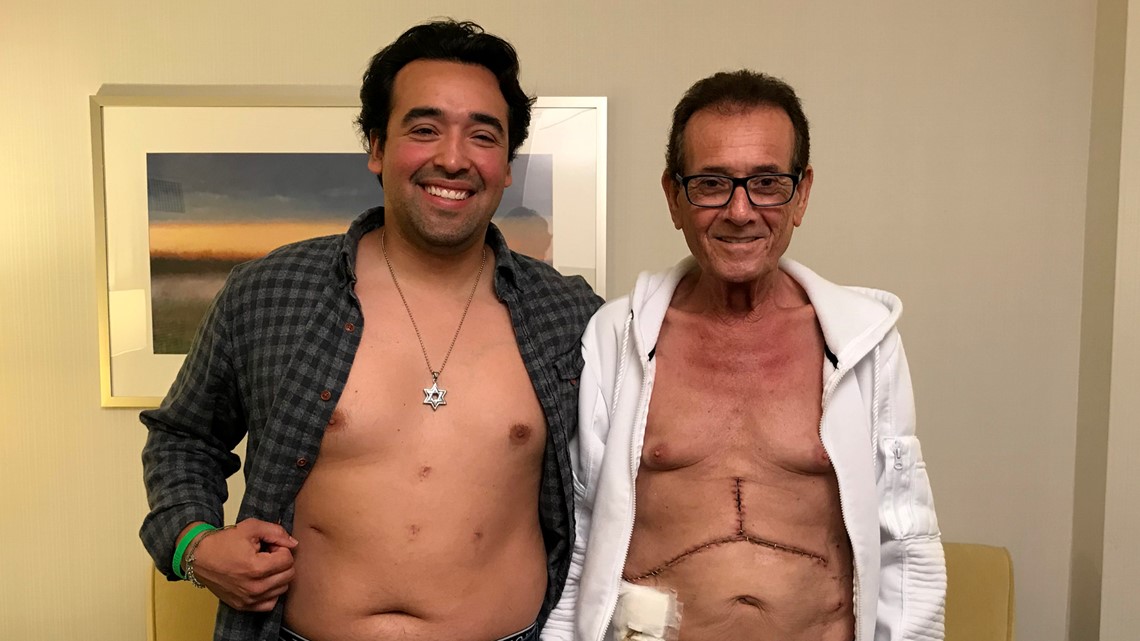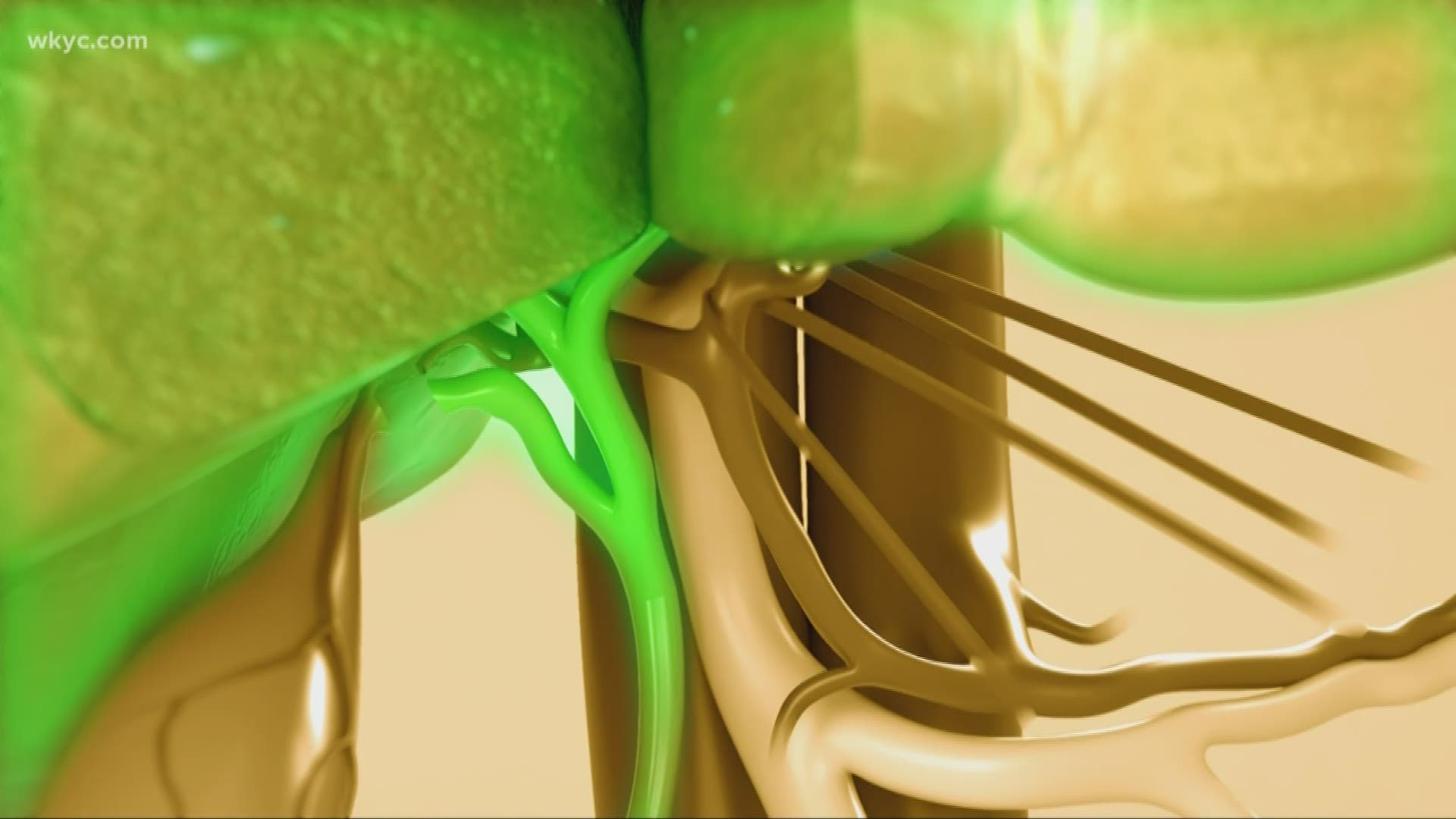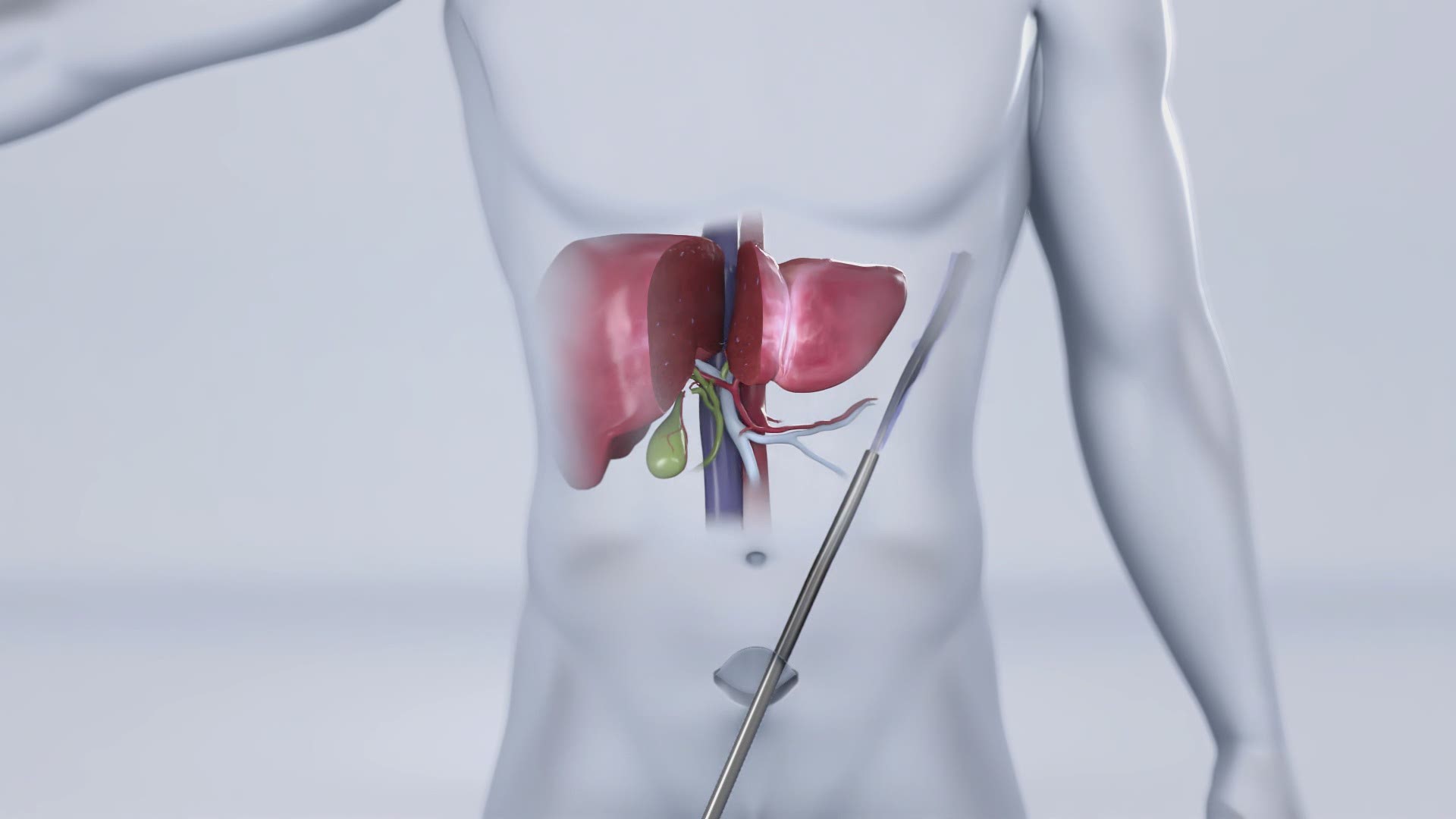CLEVELAND — The Cleveland Clinic has achieved another medical advancement by successfully performing the Midwest’s first purely laparoscopic living donor surgery for liver transplantation in an adult.
“The advanced procedure is available at only a few hospitals worldwide, and Cleveland Clinic is the second U.S. academic medical center to offer this approach for living donor liver transplantation,” officials said in a press release.
Here’s a more in-depth description from the Cleveland Clinic of how the operation works:
Unlike open surgery that requires a large incision to access the liver, the laparoscopic procedure is performed with surgical tools and a camera inserted through a few half-inch holes in the abdomen of the living donor. Once the piece of the liver is dissected, the surgeon retrieves the graft through a small incision below the navel. The minimally invasive technique benefits the living donor, who experiences better postoperative recovery and a quicker return to normal life, less pain, smaller scars, and lower risk of an incisional hernia compared with traditional open surgery.
About five percent of people who undergo a liver transplant receive the organ from a living donor who has made the altruistic decision to give up a portion of their liver to save someone else’s life. The liver is the only organ that can regenerate, which makes it possible for a living person to donate a portion of their liver. It can take six to eight weeks for a healthy liver to grow back to its original size.
On August 19, Choon Hyuck David Kwon, M.D., Ph.D., director of Laparoscopic Liver Surgery at Cleveland Clinic's Digestive Disease & Surgery Institute, led a team of surgeons and nurses during the minimally invasive procedure that extracted a third of the liver from a 29-year-old living donor.
In an adjacent operating room, Koji Hashimoto, M.D., Ph.D., Cleveland Clinic’s director of Living Donor Liver Transplantation, and his team received the donated segment of the liver and performed the transplant in a 66-year-old recipient. Due to an irreversible liver disease called cryptogenic cirrhosis, the recipient was suffering from life-threatening complications and needed a liver transplant.


With advances in surgery and technology, living donor liver transplantation has become as important as deceased donor liver transplantation to save patients who are suffering from liver diseases.
“Living donor liver transplantation can save sick patients before they become too ill for a transplant," said Dr. Hashimoto. "Patients on the waiting list to receive a liver from a deceased donor experience serious symptoms of chronic liver disease that affect their function and quality of life. If they identify a healthy living donor who is a good match with compatible liver anatomy, the surgery can be performed within a shorter waiting time. Living donor liver transplantation provides the best opportunity for patients in a timely manner."
Statistics from the United Network for Organ Sharing show approximately 3,000 people die annually or become too sick while waiting to receive a liver transplant.
"In addition to shorter waiting times, living donor liver transplantation provides numerous advantages for recipients," officials with the Cleveland Clinic said. "The quality of the liver is better, as living donors are healthy adults who have undergone a thorough medical evaluation. Also, because the operations on the donor and recipient take place at the same time, the period of ischemia (when the liver is without blood) is short – minutes, not hours. With advances in minimally invasive living donor surgery, the goal is to improve the recovery of living donors, which may encourage more individuals to participate in living donor liver transplantation."
Dr. Kwon and his team have now successfully conducted this procedure on four more liver donors since the initial operation in August.


